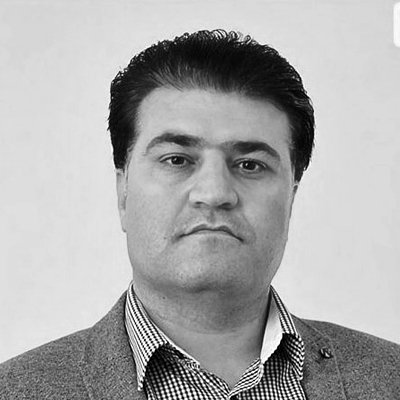 The One-Belt, One-Road Initiative (BRI), launched by Beijing in 2013, seeks to connect Asia to Africa and Europe, to improve regional integration, increasing trade and stimulating economic growth.
The One-Belt, One-Road Initiative (BRI), launched by Beijing in 2013, seeks to connect Asia to Africa and Europe, to improve regional integration, increasing trade and stimulating economic growth.
The China-Pakistan Economic Corridor (CPEC) is an important part of the BRI plan and one of the most successful BRI projects. The $62 billion China-Pakistan Economic Corridor (CPEC) was officially launched by the two countries in 2015 and has been a game-changer with initial successes.
The BRI project has brought Pakistan $25.4 billion in direct investment, 510 km of highways, more than 8,000 MW of electricity generation, and 886 km of main transmission network. The project had slowed down due to political, economic, and security challenges and crises in Pakistan.
In July 2023, Pakistan and China signed six important documents for the expansion and acceleration of cooperation (CPEC). Pakistan’s new government is hoping to inject new momentum, hoping to revive the massive investment plan after project delays and build an upgraded version of the CPEC.
The CPEC is the key pillar of Pakistan-China friendly relations. Pakistani Prime Minister Shahbaz Sharif arrived in China on his first five-day official visit (from June 4-8 2024) to start a new era of CPEC.
In an article in the Global Times, he said that the enhanced version of the CPEC will promote regional connectivity, integration, and shared prosperity, attract more Chinese investment in key sectors in Pakistan, create more job opportunities, stimulate economic growth, and promote stability. He also spoke about the development of macroeconomics in the country. From this point of view, the upgraded version of the CPEC with more than 60 projects promises a brighter future with growth, increased livelihood, innovation, and cooperation in industrialization, agriculture, information technology and mining, in harmony with Pakistan’s development agenda.
Based on mutual understanding, the second phase will be accelerated and the CPEC projects will be integrated with Pakistan’s national priorities in renewable energy, innovation, and job development. Simplifying foreign direct investment (FDI) processes in Pakistan through the establishment of the Special Investment Facilitation Council (SIFC) in June 2023 is a key strategic goal in the next five years. To replicate China’s model in Pakistan, Islamabad is pursuing access to Chinese capital markets, monitoring and facilitating investment programs, and commitment to support and provide security for Chinese personnel, projects, and institutions. Pakistan is looking to recover its economy from recession and foreign debt. Therefore, the economic advantages of the second phase of the CPEC can create jobs, grow innovative industries, and increase export and communication capacities. Pakistan can hope for good growth. It highlights the benefits of the CPEC in its four major initiatives, the development of Gwadar seaport land transport and infrastructure development, and the creation of Special Economic Zones. The agriculture sector is the backbone of Pakistan’s economy and the country is looking for cooperation under the CPEC to increase production.
China’s investment in the CPEC and approaches such as the construction of the new Gwadar International Airport, is stimulating the positive economic growth and GDP of Pakistan and turning Gwadar into a regional and international logistics center. One of the main goals of the CPEC is to develop Gwadar Port as a transportation port and a regional economic hub. It seems that Islamabad considers the advancement of all projects in the CPEC to strengthen the strategic relationship with China, control India and expand Beijing’s influence in the Indian Ocean change the game in the region, and connect Afghanistan and Central Asia. In its 2025 vision, the government of Pakistan has put the modernization of transportation and regional connectivity in line with the CPEC plan. In fact, projects such as the Karachi-Peshawar road project, Central Asian-CPEC, and Afghanistan’s joining BRI means strengthening Pakistan-Central Asian transit routes.
The CPEC project is supposed to connect the western part of China to Gwadar and Islamabad wants to develop China’s trade with the Middle East, and Africa centered on Gwadar and Pakistan. Apart from this, Pakistan has tried to make its place more important by plans such as inviting other players to the CPEC.
There is wide agreement among the provinces and political parties of Pakistan on the benefits of CPEC. There are also hopes for socio-economic development, reaching the benefits of the CPEC to local communities, and pushing the country towards sustainable development and self-reliance.
Obstacles of the CPEC
The CPEC is still progressing at a slow pace. Of the 21 power projects, 14 have been completed, of the 24 transport projects, six have been completed and of the nine Special Economic Zones (SEZs), none have been completed. Apart from the impact of political instability and technical challenges, security is the number one challenge of the corridor in Pakistan. The CPEC development program is facing a huge challenge including the insurgents in Baluchistan, the jihadists and extremists, the killing of Chinese nationals and Pakistani workers, the increase in security costs, and the provision of security and facilities. Major extremist groups can be a significant threat to BRI or CPEC.
Despite the government’s greater commitment to support and provide security for Chinese personnel, projects, and institutions and cover the security of the 3,000-kilometer corridor with tens of thousands of security forces, there is still a complete lack of Chinese trust. In the last year, sometime after the attacks on the Chinese companies, they suspended the work in the projects. Baloch nationalists have asked China to shut down the CPEC and leave Balochistan.
The geopolitical, political, and military consequences of the expansion of China’s presence in Pakistan are important. According to many in Pakistan, the United States and India are colluding and interfering in the CPEC. From India’s point of view, China’s increasing presence in the region and Kashmir, and the CPEC project are “illegal, illegitimate, and unacceptable”.
Despite US concerns about China’s ambitions, the CPEC may be adversely affected by geopolitical competition in South Asia. The basic problems of lack of water, electricity, and gas are among the major difficulties of the CPEC. The unavailability of essential services will cause a delay. For example, the potential of Gwadar is promising, but the incentives are not enough and the infrastructure is insufficient. Therefore, Gwadar’s full transit and commercial potential will not be fully utilized in the short term.
Still, the type of distribution of economic projects, the approach of the federal government, and the competition between states in Pakistan cause challenges and competition. Pakistan’s debt and obligations have increased to 124 billion dollars, of which 30 billion dollars are owed to China. Pakistan’s economic problems have made some consider the CPEC as the main factor. Although China has repeatedly extended the deadline for repayment of Pakistan’s loans, there are concerns about the way forward. However, government officials maintain that the CPEC has not become a “debt trap” and that the negative publicity against CPEC has a political element. However, there are still concerns about environmental effects, foreign loans, and debt crisis.
Vision
The pace of projects has decreased, but it is expected to increase to 62 billion dollars by 2030. Parts of the CPEC are still in the early stages, but without CPEC, Pakistan would have faced a severe energy crisis.
The second phase of the CPEC seems to be more beneficial by focusing on industrial cooperation and trade linkages through increased investment in sectors such as energy, agriculture, information technology, mining, and nine Special Economic Zones (SEZs).
The second phase of the CPEC can play an important role in strengthening the development of infrastructure, employment, trade, education and employment, growth of human capital and investment in Pakistan, and strengthening the national economy. The CPEC can still play an important role in making Pakistan one of the main economies of the region.
The management of Pakistan’s political stability, the finalization of the bilateral agreement and the construction of routes, the geographical proximity of Gwadar port to the Middle East, and the change in global and regional conditions can cause the success of the CPEC to attract other international actors.
However, the economic conditions and foreign exchange reserves of Pakistan, and the increase in Pakistan’s foreign debts, may slow down Beijing’s investment and negatively affect the continuation of investment in Gwadar. If the challenges, especially the security ones, increase day by day and the policies of the two countries do not go well, it may have adverse financial consequences for Pakistan.
Farzad Ramezani Bonesh




